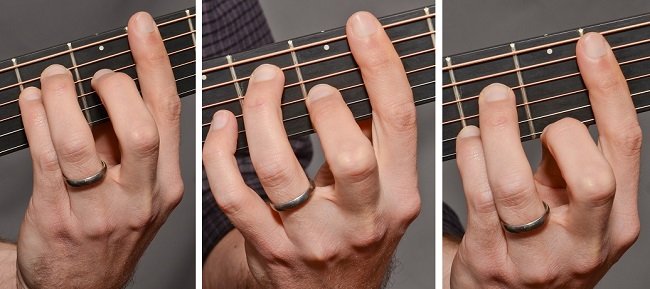Conquering the dreaded bar chords with different techniques and exercises for building finger strength
The barre Chord commonly known as the bar chord is a rite of passage for all aspiring guitarists. It’s the gateway to countless songs and styles, but it can also be a frustrating hurdle for beginners. The feeling of trying to press down multiple strings with one finger can be daunting, and the pain and fatigue that often follow can be discouraging. But fear not, fellow guitarists! With the right techniques and exercises, you can break the bar-chord barrier and unlock a whole new world of musical possibilities.
What is a Bar Chord?
A bar chord is a chord that is formed by barring (pressing down) all six strings with your index finger across a specific fret. This creates a solid foundation for the chord, allowing you to fret the remaining notes with your other fingers. Barre chords are essential for playing songs in different keys and exploring various musical styles.
Why are Barre or Bar Chords Difficult?
There are several reasons why these chords can be challenging for beginners:
- Finger strength: It requires a significant amount of finger strength to press down all six strings evenly with one finger.
- Finger positioning: These chords require precise finger placement to ensure all strings ring out clearly.
- Hand contortion: The contortion of the hand required to form a bar chord can be uncomfortable and awkward at first.
- Coordination: Coordinating the barre with the other fingering patterns can be tricky.
Breaking the Barrier: Essential Techniques
Now that we’ve identified the challenges, let’s explore some techniques to help you conquer the these chord:
- Start with the right guitar: Make sure your guitar is a good fit for you. A guitar with a lower action (the distance between the strings and the fretboard) can make these chords easier to play.
- Warm up your fingers: Before you dive into barre chords, warm up your fingers with some gentle stretches and exercises. This will help to improve your flexibility and reduce the risk of injury.
- Use proper hand positioning: Place your index finger across the fretboard perpendicular to the frets. Your thumb should be wrapped around the back of the neck for support.
- Apply even pressure: Focus on pressing down evenly with all fingertips of your barring finger. Imagine you are trying to press the fretboard down onto the neck.
- Start on lower frets: Begin practicing these chords on lower frets, where the strings are closer together and easier to press down. As you gain strength and confidence, gradually move up the fretboard.
- Use a partial bar: If a full barre is too difficult at first, try using a partial barre with just 2-3 fingers. This will still allow you to play many common chords.
- Focus on individual strings: Isolate each string and practice pressing down with your bar finger while ensuring it rings out clearly.
- Don’t get discouraged: It takes time and practice to master any bar chord. Be patient with yourself and celebrate your progress along the way.
Exercises for Building Finger Strength
In addition to the techniques mentioned above, here are some exercises you can do to build finger strength and improve your bar chord playing:
- Finger stretches: Gently stretch your fingers apart and hold for 10-30 seconds. Repeat several times.
- Isometric exercises: Press your fingertips against a wall or table as hard as you can for 10-20 seconds. Relax and repeat.
- Finger independence exercises: Practice fretting individual strings with each finger, focusing on applying clean pressure.
- Barre chord holds Practice holding down a these chord for as long as you can, starting with short intervals and gradually increasing the duration.
- Chromatic barre scales: Play a chromatic scale (all 12 notes) up and down the fretboard using a bar chord. This will help you build strength and finger coordination.
Additional Tips
- Use a metronome: Practicing with a metronome will help you develop timing and accuracy.
- Record yourself: Record yourself playing barre chords and listen back to identify areas for improvement.
- Seek help from a teacher: A guitar teacher can provide personalized feedback and guidance on your barre chord technique.
- Have fun!: Remember, learning guitar should be enjoyable. Celebrate your successes and focus on making progress, not perfection.
With dedication, practice, and the right techniques, you can break the bar-chord barrier and unlock a whole new world of musical possibilities on the guitar. So grab your guitar, be patient, and keep practicing! You’ll be strumming those bar chords like a pro.
Some songs that sound better with Barre Chords:
Added by
GuitarGaGa
WRITE A COMMENT
WRITE A COMMENT


No comments yet